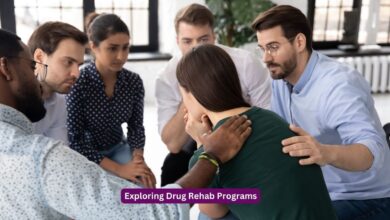Enhancing Design Visualization With Photorealistic 3D Rendering

Visualizing ideas has always been an important part of the creative process in design and building. Traditionally, this involved sketches, drawings, and physical models to convey ideas and designs to clients and stakeholders. However, with advancements in technology, particularly in the field of 3D rendering, designers now have a powerful tool at their disposal to transform concepts into vivid, lifelike visuals. Photorealistic 3D rendering has revolutionized design visualization, offering unparalleled realism and detail that not only enhances presentations but also aids in decision-making and project approval.
Understanding Photorealistic 3d Rendering
At its core, photorealistic 3D rendering is the process of creating highly realistic images from 3D models using specialized software and rendering techniques. Unlike traditional 2D drawings or basic 3D models, photorealistic rendering aims to replicate real-world lighting, textures, materials, and perspectives with astonishing accuracy. This level of detail allows designers to showcase their vision in a way that closely resembles the final product, providing clients and stakeholders with a clear, tangible preview of what to expect.
The Evolution From 2D To 3D Rendering
While these methods were effective in conveying basic ideas, they often fell short in communicating spatial relationships, material finishes, and the overall ambiance of the design. Photorealistic 3d rendering services bridge this gap by offering a holistic view that integrates all these elements into a cohesive visual narrative. This evolution has not only improved communication between designers and clients but has also streamlined the design process by enabling faster iterations and revisions.
Benefits Of Photorealistic 3D Rendering
- Realism And Accuracy:
Photorealistic 3D rendering excels in capturing the smallest details, from the texture of materials to the interplay of light and shadow. This level of realism allows clients to experience the design as if they were standing within the space itself, fostering a deeper understanding and appreciation of the proposed concept.
- Visualization Of Design Variations:
Design is often a collaborative process that involves exploring multiple iterations and variations. Photorealistic rendering facilitates this by allowing designers to quickly generate different design options and present them in context. Clients can visualize various scenarios and make informed decisions based on realistic depictions rather than abstract concepts.
- Cost And Time Efficiency:
When compared to the old ways of making models or mock-ups out of real things, photorealistic modeling saves time and money. Design changes can be implemented swiftly within the digital environment, minimizing the need for costly revisions during the later stages of construction or fabrication.
- Marketing And Communication Tool:
Visual appeal is very important in fields like real estate and product design to bring in possible buyers and investors. Photorealistic rendering serves as a powerful marketing tool, helping to create compelling visuals for marketing campaigns, presentations, and promotional materials.
- Design Validation And Client Approval:
One of the significant challenges in design projects is ensuring that client expectations align with the proposed design. Photorealistic rendering facilitates better communication and reduces misunderstandings by providing clients with a clear representation of the final outcome. Being open and honest like this builds trust in the design team’s skills.
Applications Across Industries
The versatility of photorealistic 3D rendering extends beyond architecture and interior design. It is increasingly being adopted in industries such as automotive design, product development, urban planning, and entertainment. Each application leverages the strengths of 3D rendering to enhance visualization, streamline workflows, and accelerate innovation.
– Automotive Design:
Car manufacturers use photorealistic rendering to visualize vehicle prototypes, test different designs, and simulate real-world environments. This enables engineers and designers to refine aerodynamics, aesthetics, and functionality before production.
– Product Development:
From consumer electronics to furniture design, product developers utilize photorealistic rendering to showcase product features, materials, and ergonomics. This aids in market research, crowdfunding campaigns, and pre-sales initiatives.
– Urban Planning And Architecture:
City planners and architects use 3D rendering to visualize urban developments, infrastructure projects, and public spaces. This facilitates community engagement, environmental impact assessments, and regulatory approvals.
– Entertainment And Virtual Reality (VR):
In the realm of entertainment, including video games and virtual reality experiences, photorealistic rendering is essential for creating immersive worlds, lifelike characters, and dynamic visual effects. It enriches storytelling and enhances user engagement.
Future Trends And Innovations
Looking ahead, the future of photorealistic 3D rendering promises even greater realism, interactivity, and accessibility. Advancements in rendering algorithms, GPU technology, and artificial intelligence (AI) are paving the way for faster rendering speeds, enhanced realism, and more intuitive design tools. These innovations will empower designers to push the boundaries of creativity while meeting the evolving demands of clients and industries.
Conclusion
In conclusion, photorealistic 3D rendering represents a paradigm shift in design visualization, offering unparalleled benefits in terms of realism, efficiency, and communication. By leveraging this technology, designers can elevate their presentations, streamline decision-making processes, and ultimately deliver exceptional results that exceed client expectations. As the industry continues to evolve, the role of photorealistic rendering will undoubtedly remain indispensable in shaping the future of design and innovation.



